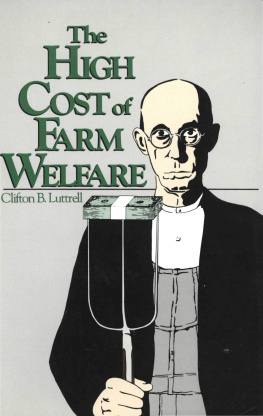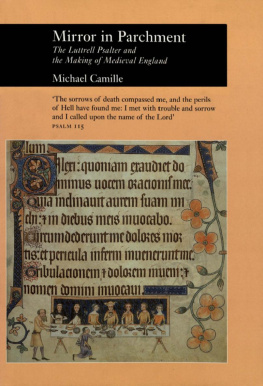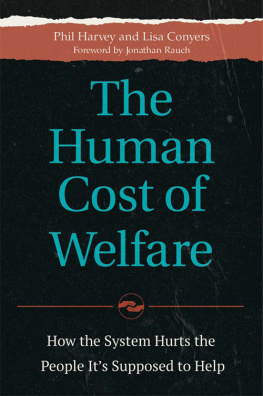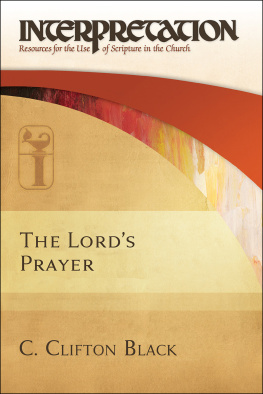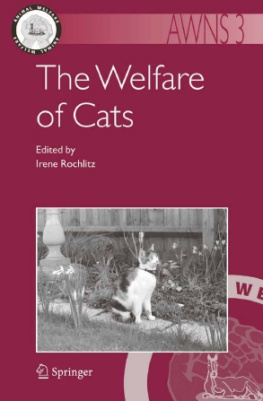The High Cost
of Farm Welfare
The High Cost of
Farm Welfare
Clifton B. Luttrell
Copyright 1989 by the Cato Institute.
All rights reserved.
Library of Congress Cataloging-in-Publication Data
Luttrell, Clifton B.
The high cost of farm welfare / Clifton B. Luttrell.
p. cm.
Bibliography: p. 131
Includes index.
1. Agricultural subsidiesUnited States. 2. Agriculture and state United States. 3. AgricultureEconomic aspectsUnited States. I. Title.
HD1761.L87 1989 338.l'8dcl9
ISBN 0-932790-70-4. 88-34439
ISBN 0-932790-71-2 (pbk.) CIP
Printed in the United States of America.
CATO INSTITUTE
224 Second Street SE
Washington, D.C. 20003
Preface
In recent years, even taxpayers and consumers who think John Deere is an alias have had to take an interest in U.S. farm policy. Direct taxpayer costs of our current farm program amount to over $400 per family every year. In addition, there are the higher prices we pay at the cash register for our food and fiber. And there are the odd distortions. Like government grain rotting in temporary bunkers thrown up all around the Midwest. Like unexpected distributions of free cheese. Like farmers being paid to slaughter their dairy cows and go out of business. Like other farmers being paid to raise that venerable American weed, tobacco. Americans are beginning to realize that government interventions into agriculture are producing some weird, often disturbing, and extremely costly effects.
Government farm programs have existed for as long as farmers have been going out of business, which is most of this century. They really began to wind up with the advent of Franklin Roosevelt's New Deal in the 1930s. Their development since has been a steady upward spiral. World War II brought special "emergency" measures to support farm production. The Korean War did likewise. When our government sowing subsidies began to reap surpluses that were unmanageable, it nobly set up a massive "Food for Peace" program, which masked the dumping of excess American foodstuffs on underdeveloped nations (to the detriment of their own farmers) behind humanitarian rhetoric.
But Uncle Sam's blundering excursion into the world of gentleman farming really began to accelerate in the late 1960s and the 1970s. Having tinkered with a wide variety of crop loans, price supports, indirect subsidies, and whatnot, the Agriculture Department began to experiment with direct payments to farmers. Direct payments in return for promises to retire land. Direct payments to achieve a guaranteed crop price. Direct payments to do any number of specific things with one's milk cows.
This strategy reached its formal conclusion in the Payment-in-Kind (PIK) program of the early 1980s. Under this interesting plan, farmers were convinced not to grow foodstuffs by being paid off in foodstuffs the government had bought from them in earlier years. The effect was sort of like getting your slow-witted brother to buy a hound dog from you, then convincing him to give it back later because it was so obnoxious to keep, and besides he didn't want you to bring another one of those troublesome things home. This type of dealing proved enormously expensive for the government.
The one advantage of direct payments to farmers was that they allowed taxpayers to get some idea of just who exactly was reaping the benefits of the farm program. Many taxpayers were not amused to learn that most of the financial gains go to farmers with at least six-digit gross annual salesnot poor people. This was a critical insight, for the government farm programs were originally designed with the objective of improving the welfare and social standing of poor farmers. Farm people have long been thought to be structurally disadvantaged in comparison with other occupations. The goal of government subsidies was to allow farming families to achieve "parity" in their standard of living with nonfarming families in the industrial economy.
In fact, this study finds, farmers are not grossly poorer than nonfarmers. Nor do they operate under some separate code of returns. Farmers do what they do because they find it economically and otherwise rewarding. Government attempts to pump up average farm income will not have much lasting effect on average earnings; they will just draw more individuals into farming. The returns to farming in this country are largely predetermined by how much the relevant resource inputs (the farmer's labor, land, and capital, primarily) could earn elsewhere in the American economy. You are swimming against a very strong stream when you try to pay a redundant farmer to remain a farmer rather than become a car dealer.
If eliminating farm poverty were the only goal of U.S. agricultural policy, it could be done relatively cheaplyfor about $4 billion at mostsimply by sending payments directly to families below the poverty line. By doing it instead with price supports and so forth, we end up sending some fat checks to retirees living in the Virgin Islands who happen to own a 1,000-acre ranch.
But of course, our farm policy aims for more than just the elimination of rural poverty. It aims to preserve the family farm as a valuable social institution. It has bought urban support through a food stamp program, which in the name of ending hunger also provides some small boost to growers. As part of our overall trade strategy it discourages imports of many food products. It is ultimately a big part of our regional politics, one of many schemes used to direct government funds away from one voter constituency and toward another. Confused about even what it hopes to achieve, our farm policy is rife with contradictions, often at war with itself, consistently inconsistent.
This study traces the interesting, methodical accretion of government interference in agriculture over the last 50 years and more. It looks closely at such auxiliary farm programs as the farm credit system, the food stamp program, the protections for dairymen and sugar growers. And it examines in detail the efficiency of federal farm policy in improving the well-being of low-income farm people.
Acknowledgments
In preparing this manuscript for publication I have benefited from criticism and suggestions by Gary Santoni, a former colleague at the Federal Reserve Bank of St. Louis, and by Professors Charles Orvis at Rhodes College, Dail Bails at Memphis State University, and E. C. Pasour at North Carolina State University. None bears any responsibility for errors, omissions, or viewpoints in the final product, however. I am especially grateful for the assistance provided by the Government Documents Section of Memphis State University Library. Saundra Williams and her staff were most helpful in obtaining hard-to-find materials and documents. In addition, I want to express my gratitude to Doris Johnson for performing the secretarial work, making obvious corrections, and assuming the burden of keeping the various parts of the study in order. Finally, I want to thank Karl Zinsmeister for his yeoman efforts in editing the manuscript and making itI hopereadable for laymen as well as agricultural economists.
1. Birth of the Farm Programs
Prior to World War I there was little direct federal support for farming in this country. What programs existed were peripheral efforts to expand markets, reduce monopolies, and increase the supply of credit and farm supplies. Specifically, the government supported farm cooperatives, credit unions, and farmer education. There was no government intervention in markets to increase commodity prices and farm incomes. Prices and incomes were determined entirely by supply and demand conditions, and individual farmers made production decisions based on price signals.


